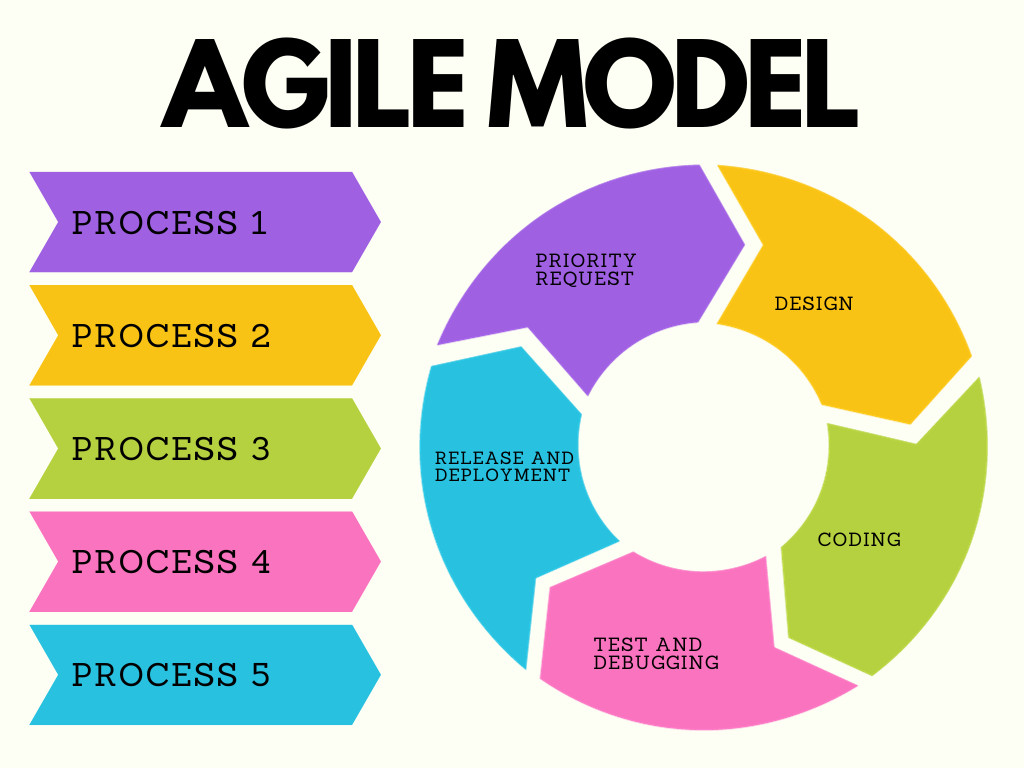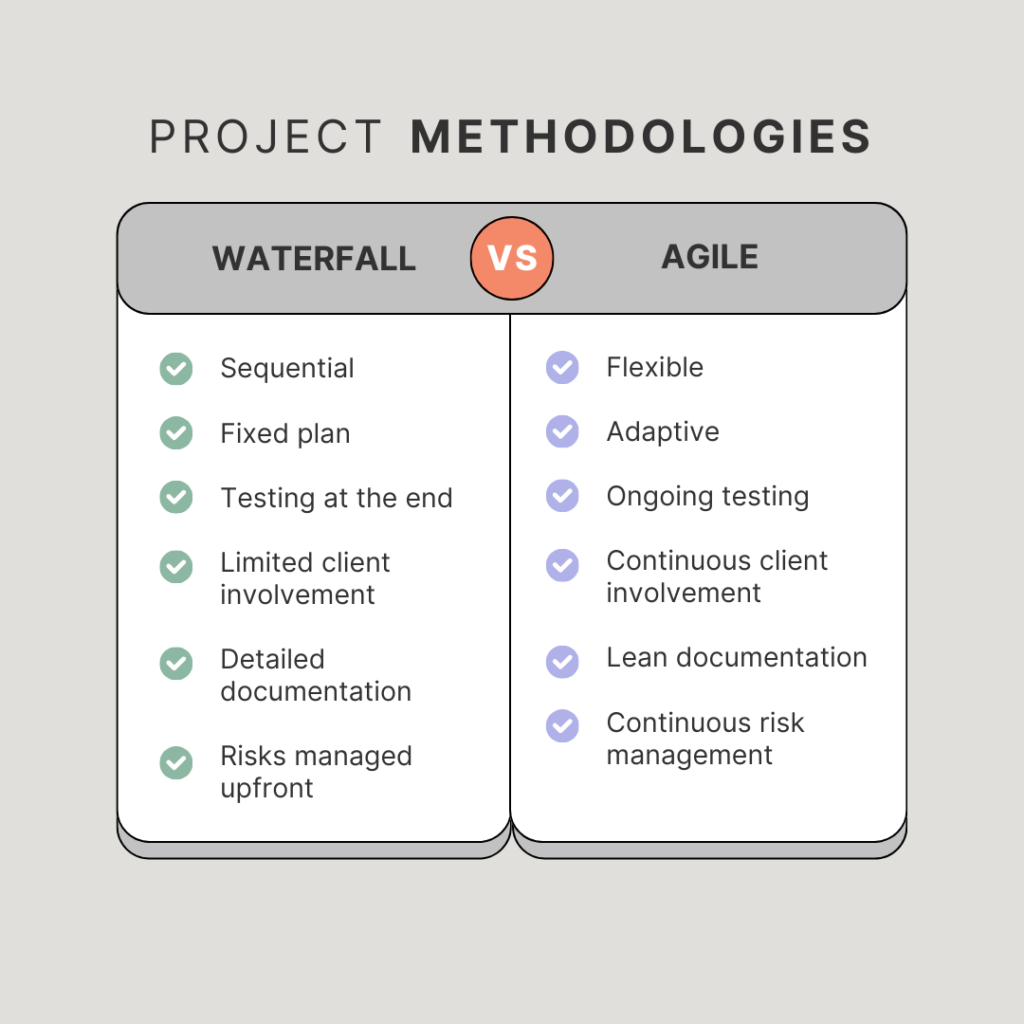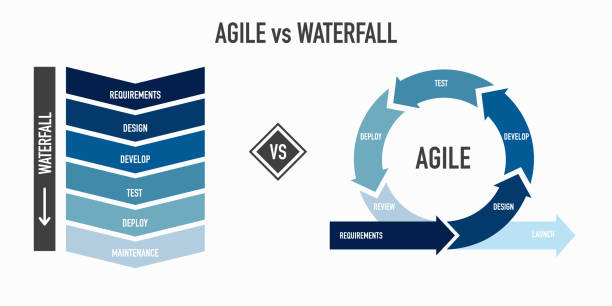Hello everyone, welcome back to this session. So in this session, we are going to discuss the agile methodology. So without wasting any time, let’s go ahead and see what the agile methodology is all about.
So in a previous session, we saw what waterfall methodology is. The major disadvantage of using the waterfall methodology is that the delivery of the software took around six months to a year for the delivery and for the development and delivery to the customer, right?
But in agile methodology, what we do is we believe in shorter release cycles and we can deliver a particular product in say a month if not a year. So this is the power of agile methodology and how it does that is like this.
So, guys, we will discuss the release cycle for agile methodology.
Release Cycle of Agile Methodology

So the first stage is priority request. Now what happens in a priority request is you prioritize the features that the customer wants, right?
Say the requirements that the customer gave us were around 15 features. So you would pick up three or four features that the customer wants right now, the features that matter the most to the customer, you prioritize them and you start working on them.
So basically you’re not working on 15 features together. You’re working on the most important features first so that you can develop them first and release them shortly.
All right? So you pick up those features and then the whole software development methodology works till the time you release the product. Right. Now the product gets given to the customer, delivered to the customer in say about a month or a month and a half time with all the features which are first very important to the customer.
Top Advantages of the Agile Methodology
Now this solves a lot of problems. What problems?
First Advantage
First, the product got delivered early, right? He got the product say in just one month. So now the feedback for these features we will also get first.
At the same time, if any of the customer’s requirements changed, which was a major disadvantage in the waterfall model methodology, the customer requirements changed when we delivered the product after one year, right?
So with agile methodology that is not the case because if you have delivered four features and say our next release is talking about the features which are the next four, and say the customer says that my requirements for that particular thing have changed a little, we can accommodate those changes.
The reason is that we have not started working on that release yet. So this is a major advantage of using the agile methodology. So if you prefer to talk about the advantages, the customer satisfaction is high.
The reason is the requirements, even if they change over time, we can accommodate in agile methodology, we can accommodate that, right?
The Second Advantage
The second thing is there is less planning required now because we have fewer features. The architects have to plan less about workforce management. Because if you talk about the project, when we were dealing with waterfall methodology, we had to plan for the whole year, right? But over here, because the release is going to end in weeks or months, planning is much less.
The Third Advantage
The third thing is requirements can be dynamic. So the requirements that are coming from the customers can be dynamic, they can change over time. And we can accommodate that when we are dealing with software in agile methodology.
The Forth Advantage
The fourth point is that the functionality can be created and tested quickly.
So because now the features are shorter and we are creating them in months, they can be created quickly, which also keeps the momentum up for the employees because they also feel that the feedback coming from the customers is good and they feel good about their work, right?
But if you talk about when the software we are developing in waterfall methodology because it took an ear for the feedback to come in, there was a high uncertainty whether the product that we are making right now, would be relevant to the customer or not, right?
So in this case, the functionalities can be created in the asset quickly, which automatically boosts the employee’s morale.

Disadvantages of Agile Methodology
Now let’s talk about some disadvantages of agile. Right now it majorly covers all the disadvantages of the waterfall model. That is agile methodology. But it again has some disadvantages. Now what are those disadvantages?
The First Disadvantage
The first one is that it is still not suitable for complex projects which have a lot of dependencies. The reason being now, if you have to create projects using agile methodology, you have to put in or you have to prioritize functions that you will be creating first.
But if there are a lot of dependencies in the projects, you will have to carefully pick features that are not dependent on each other, right? So say you are creating a feature right now that could be dependent on a feature that you are developing in the future.
It could be a little problematic, right? For that very reason, it becomes a disadvantage for agile methodology because it becomes difficult to manage complex projects wherein you have to plan a little more, which would lead to more time in planning and hence would increase the release cycle time that we are trying to shorten in agile methodology.
The Second Disadvantage
The second reason is the knowledge transfer of colleagues can be difficult now in agile methodology because you have to work very fast. There is little or less documentation for your whole project.
And that becomes a problem because if new employees join or new team members come in, it becomes difficult for them. After all, they don’t have any written source anywhere and you have to manually sit with them face to face and do the KT with them as to what is going on in the project, right?
Because we have not focused much on the documentation.
The Third Disadvantage
And the third reason is the success of the project depends heavily on customer interaction. Right?
Now, why is this a disadvantage? The reason is that some customers, know exactly what they mean, right? Or what exactly do they need from the project?
However, some customers, do not exactly know what they need from their project. And if the customer interaction is like the latter, we will not be able to prioritize our features properly.
Because if the customer does not know what he might need early and what he can suffice for later, that could cause a problem in the feedback time. Because when you deliver the software according to what the customer said, but then the customer is not happy with the results. The reason is that he did not know first place what he wanted, and it became a problem. Enhancing it is a disadvantage for an agile methodology.
The Bottom Line
The Agile Methodology is distinct from traditional process models due to its emphasis on adaptability and flexibility. It is essential to comprehend the distinctions to make well-informed decisions that support project objectives.
Traditional models adopt a more sequential and regimented methodology, whereas agile emphasizes flexibility, collaboration, and iteration. The specific project requirements, organizational culture, and degree of project uncertainty all influence the decision between Agile and traditional methodologies.


1 thought on “How is the Agile Methodology different from the traditional process models”
Comments are closed.